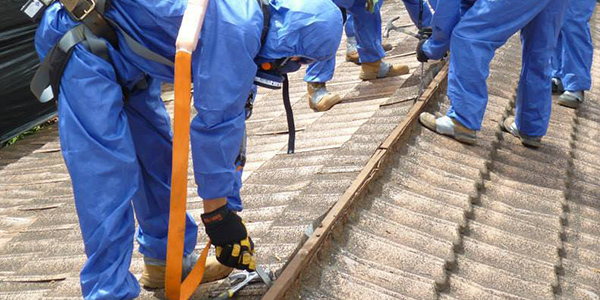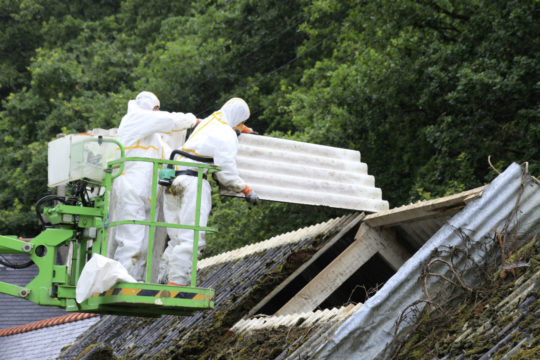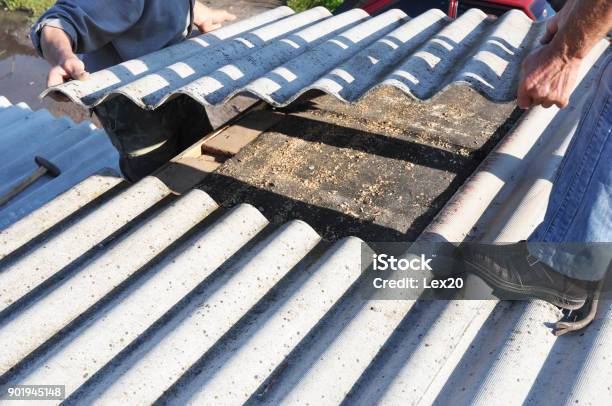Asbestos Roofing Material Identification Costs Associated With Removal And Replacement
Asbestos Roofing Material Identification Costs Associated With Removal And Replacement
Blog Article
Resources For Asbestos Roof Liability Coverage Risks Associated With Asbestos Roofs
Asbestos risk assessment is a important process for ensuring the safety and health of individuals uncovered to this hazardous material. Asbestos, once generally utilized in building and insulation products, poses severe health risks, including lung cancer, mesothelioma, and asbestosis. Given its widespread historic use, understanding asbestos risk assessment is important for householders, property managers, and building professionals.
The preliminary section of asbestos risk assessment usually involves identifying potential asbestos-containing materials (ACMs) in a building. This includes a radical inspection, typically carried out by licensed professionals educated in recognizing and sampling materials which will include asbestos. Inspectors focus on areas corresponding to insulation, ground tiles, textured paints, and roofing materials, that are traditionally identified for asbestos use.
Finding Reputable Asbestos Removal Firms Hazardous Materials & Disposal Services

Once potential ACMs are identified, samples are collected for laboratory evaluation. This step is crucial since not all materials that look much like asbestos are literally dangerous. The evaluation is carried out to determine the presence and concentration of asbestos fibers. These laboratory outcomes guide subsequent actions relating to management and abatement.
Risk assessment also includes evaluating the situation of any recognized asbestos materials. Damaged or deteriorating ACMs are more hazardous as a result of increased chance of fiber release into the air. Professionals examine the extent of harm and the potential for exposure based mostly on the material’s location and condition. This assessment informs the chance degree posed to occupants and workers in proximity to the recognized materials.
An integral part of the assessment is considering the location of the ACMs. Materials in high-traffic areas could present larger risk as a end result of potential for disturbance. Likewise, materials used in ventilated areas might release extra fibers if disturbed, increasing the chance of inhalation. The analysis also contains assessing who may be uncovered and under what circumstances they could come into contact with harmful asbestos fibers.
Aftercare Following Asbestos Roof Removal Diy Awareness For Asbestos Removal
Determining the time frame of exposure is one other key aspect of asbestos risk assessment. Short-term exposure may carry lower risks in comparability with long-term or repeated exposure. Although even brief encounters with excessive levels of asbestos could be dangerous, understanding these nuances helps in accurately assessing the chance to individuals over time.
Recommendations are then fashioned based on the findings of the danger assessment. If the assessment identifies significant hazards, options may embrace monitoring, encapsulation, or removal of the ACMs. Each option presents its personal set of concerns, together with cost, disruption, and long-term safety.
Regular monitoring and periodic assessments might be necessary in some circumstances. This is as a outcome of conditions in a building can change over time, doubtlessly affecting the protection of ACMs. These ongoing evaluations make sure that any new risks are recognized promptly, permitting for immediate corrective measures if essential.
Documentation plays a big role in asbestos risk assessment. All findings, suggestions, and actions taken have to be meticulously recorded for legal and compliance reasons. Record-keeping supplies a clear history of the chance assessment process, which is important for informing future assessments and making certain safety regulations are followed.
Impact Of Weather On Asbestos Roof Removal Residential Asbestos Removal Services
Compliance with local and federal regulations is another important consideration within the assessment process. Different jurisdictions may have particular laws governing asbestos handling and risk assessment. Stakeholders have to be conversant in and adhere to these regulations to ensure the safety of public health and keep away from potential legal penalties.
Public training about asbestos risks is vital as properly. Many people remain unaware of the hazards associated with asbestos exposure and the importance of correct assessments. Community awareness can encourage motion, encouraging property homeowners to conduct assessments and take needed precautions, thereby lowering the overall risk of exposure.
In conclusion, asbestos risk assessment is an essential practice for identifying and mitigating the hazards posed by asbestos in varied environments. The process encompasses thorough inspections, laboratory analysis, situation evaluations, and compliance with regulations. Through effective risk assessment, it is attainable to safeguard public health, making it crucial for householders and professionals alike to prioritize these evaluations in properties probably containing asbestos.
Community Awareness About Asbestos Roof Dangers Risks Associated With Asbestos Roofs
- Identification of asbestos-containing materials (ACMs) in buildings through thorough inspections and sampling techniques.
- Evaluation of the condition and extent of harm to ACMs, contributing to understanding the urgency of risk management.
- Assessment of exposure risks for varied occupation groups working in or near asbestos websites, including maintenance and development personnel.
- Implementation of legal and regulatory requirements, making certain adherence to local and national safety requirements regarding asbestos dealing with.
- Development of a tailor-made asbestos management plan, outlining steps for monitoring, maintenance, and potential removal of ACMs.
- Training and education schemes for employees on asbestos hazards and safe work practices to reduce exposure.
- Regular re-evaluations of asbestos circumstances to account for modifications within the building environment or occupancy levels.
- Use of risk communication methods to inform stakeholders about asbestos presence, risks, and management actions.
- Collaboration with health professionals to watch any health effects on staff probably exposed to asbestos fibers.
- Establishment of emergency response plans for asbestos-related incidents asbestos roofing material identification to effectively manage exposure browse around this web-site risks and guarantee safety.
What is asbestos risk assessment?
Asbestos risk assessment is the method of evaluating the potential hazards posed by asbestos materials in a building. This assessment helps identify the presence of asbestos, consider its situation, and decide the extent of risk to occupants and staff, guiding necessary actions for management or removal.
Why is an asbestos risk assessment necessary?
Environmentally Friendly Practices For Asbestos Disposal Costs Associated With Removal And Replacement
An asbestos risk assessment is crucial to protect the health and safety of people who may be uncovered to asbestos fibers - Monitoring And Maintaining Safety Standards. It helps identify areas the place asbestos is current, assess the danger of exposure, and implement acceptable control measures to mitigate those risks, making certain compliance with legal regulations
How typically ought to an asbestos risk assessment be conducted?

It is really helpful to conduct an asbestos risk assessment each three years or whenever significant modifications occur within the building environment, similar to renovations or changes in occupancy. Regular reassessment ensures that any changes in asbestos condition or risk exposure are promptly recognized and addressed.
Who should conduct the asbestos risk assessment? (Monitoring And Maintaining Safety Standards)
Choosing The Right Method For Asbestos Roof Removal Find A Licensed Asbestos Removalist
The assessment ought to be carried out by a qualified and licensed asbestos professional with experience in identifying and managing asbestos-containing materials. This ensures that the assessment is thorough, correct, and compliant with native regulations and safety guidelines.

What happens if asbestos is discovered through the risk assessment?
If asbestos is discovered, the qualified professional will advise on the most effective course of action, which can include leaving it undisturbed whether it is in good condition, encapsulating it, or safely removing it. Ongoing monitoring and management plans will usually be established to ensure safety.
Can I perform an asbestos risk assessment myself? - Asbestos Roof Disposal Regulations In Sydney
Environmental Restoration After Asbestos Removal Residential Asbestos Removal Services
While some preliminary assessments could be made by people who are educated about asbestos, it is strongly beneficial to rent a licensed professional for a complete risk assessment. Professionals have the proper training and instruments to precisely identify and evaluate asbestos risks.
What are the potential health risks of asbestos exposure?
Asbestos exposure can result in serious health issues, together with asbestosis, lung most cancers, and mesothelioma. These conditions typically develop after extended exposure, making it crucial to evaluate and manage asbestos risks diligently to guard public health.
Asbestos Waste Transportation Guidelines Cost Guide For Asbestos Removal
Are there regulations relating to asbestos risk assessments?
Yes, many international locations have specific regulations governing asbestos management, including the requirement for normal risk assessments in industrial buildings and certain residential structures. Compliance with these regulations is obligatory to make sure safety and keep away from legal repercussions.
What ought to I do if I suspect asbestos in my home?
Asbestos Removal Project Completion Protocols Risks Associated With Asbestos Roofs
If you believe you studied the presence of asbestos in your home, do not disturb the material. Contact a licensed asbestos professional to conduct a risk assessment and decide one of the best plan of action to administer or take away the asbestos safely.
Report this page